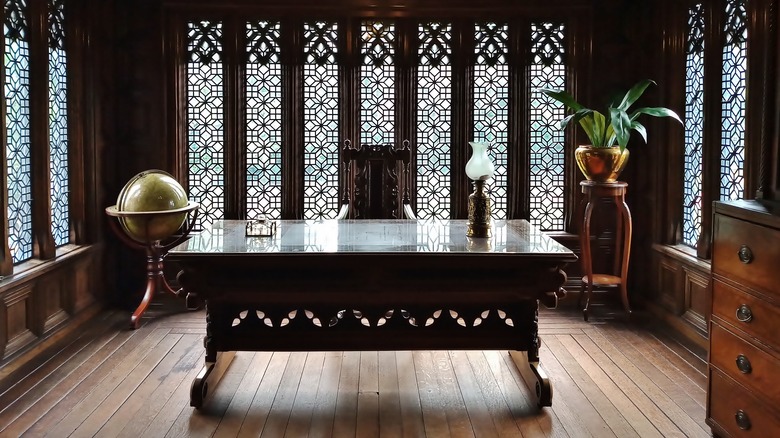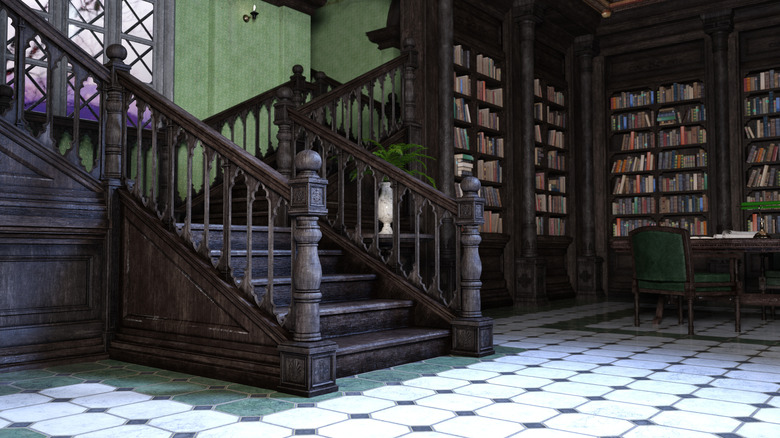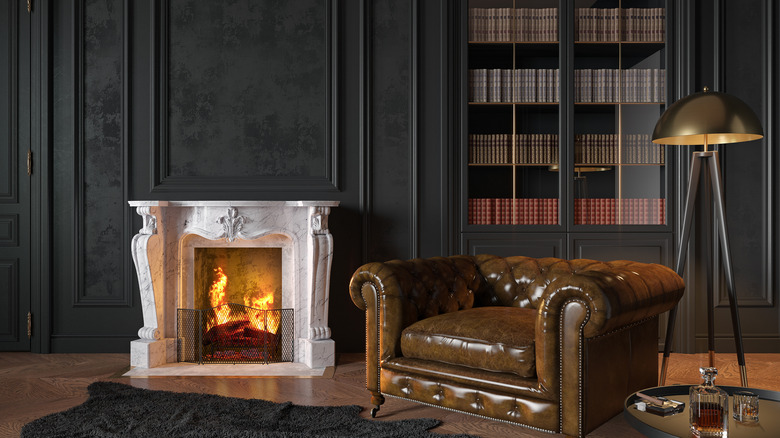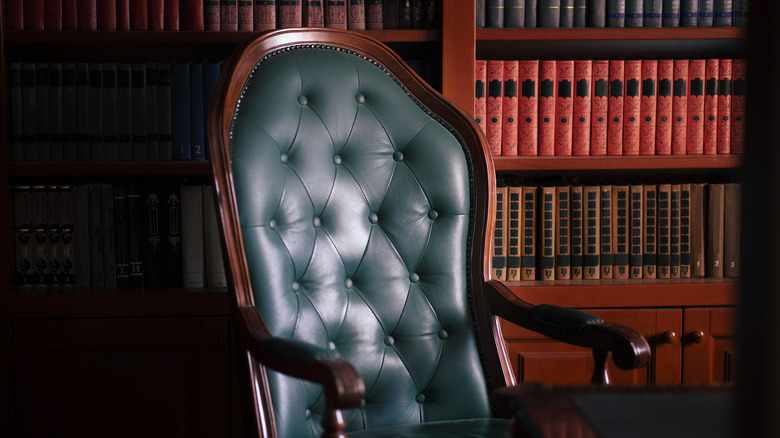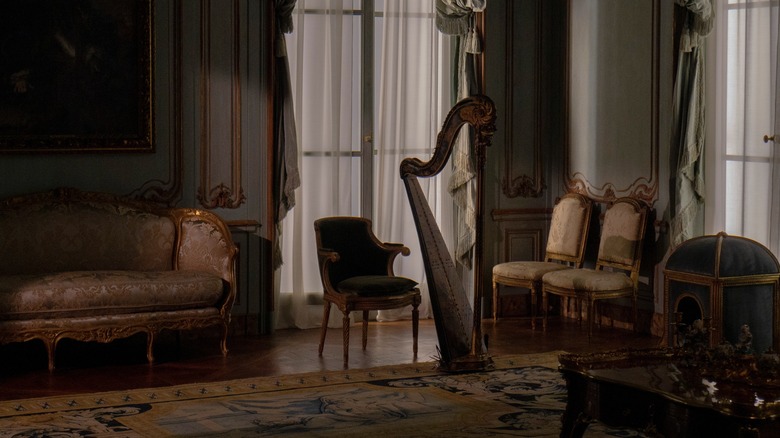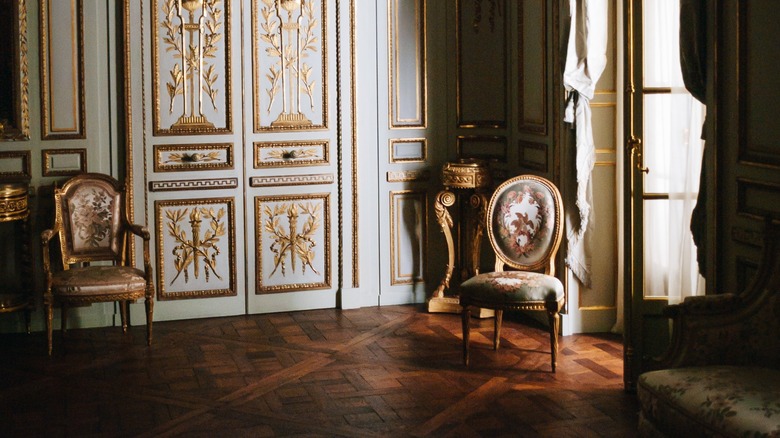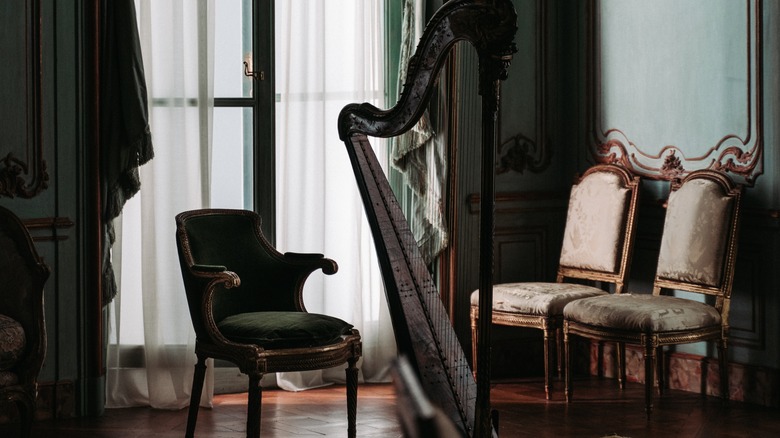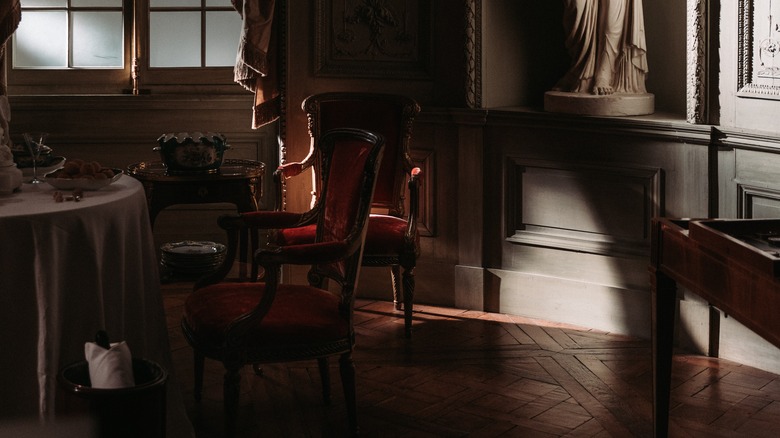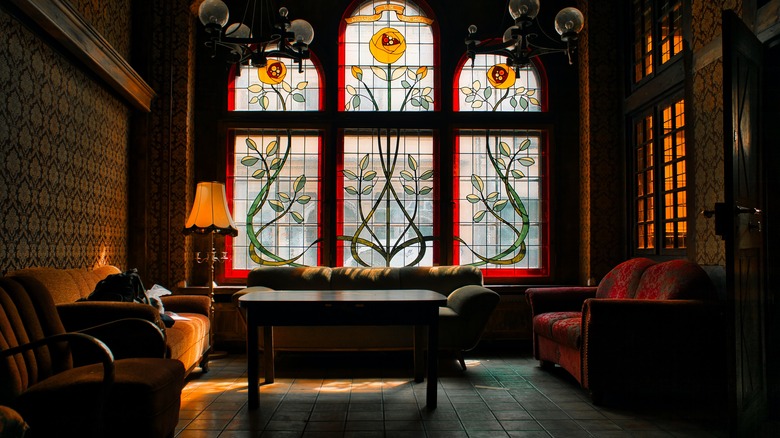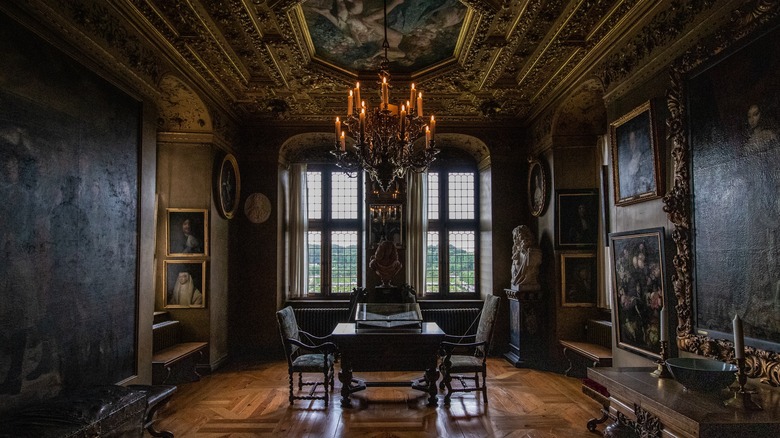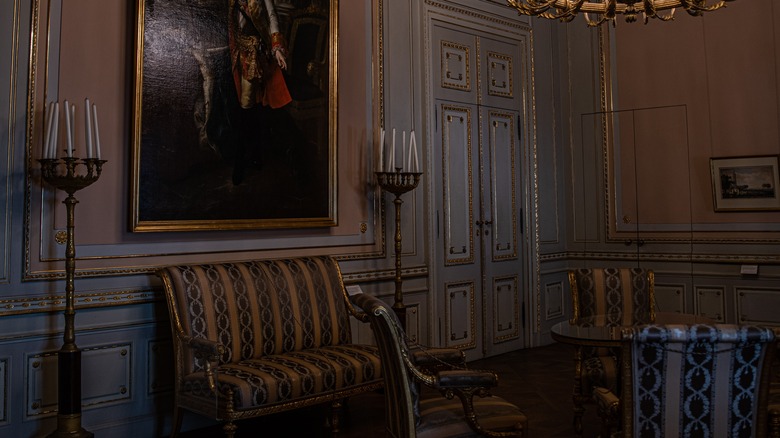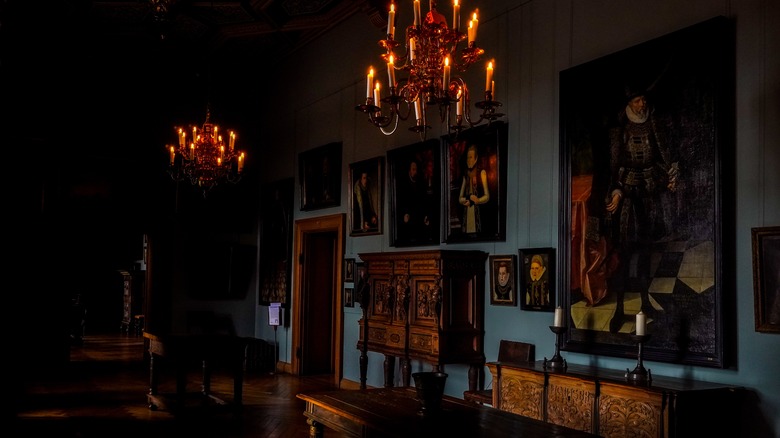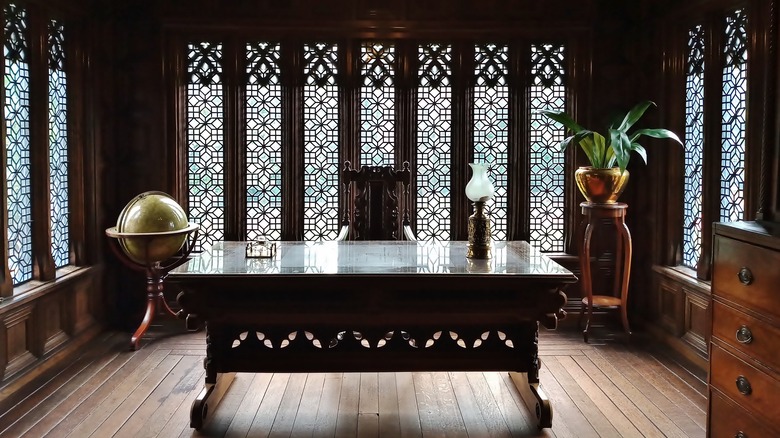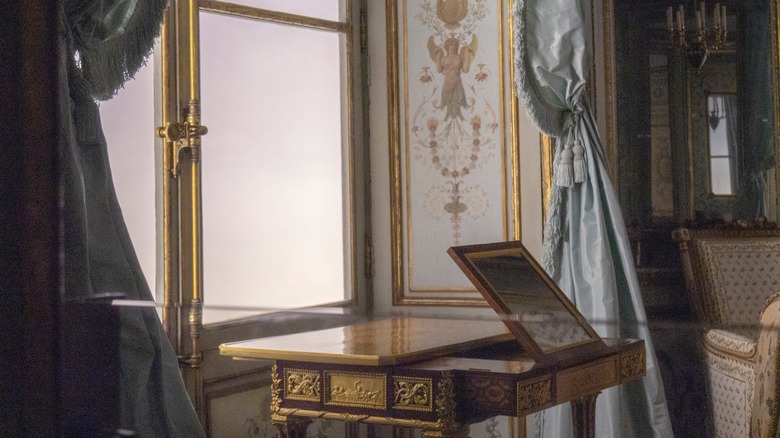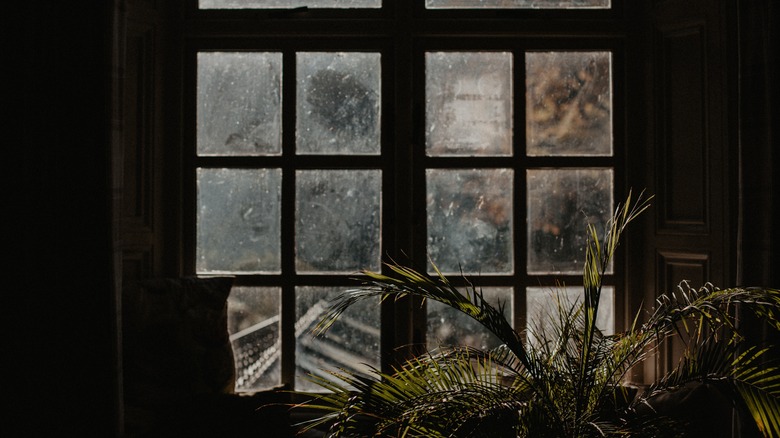15 Colors To Decorate With For A Dark Academia Aesthetic
Dark academia is an aesthetic that has risen out of the fixation of the old, prestigious ivy league look, such as Harvard, Oxford, and Cambridge — hence the name, according to Book Riot. Other pieces of media that produce a dark academic aesthetic include the "Harry Potter" books and films, "Dead Poets Society," "Sherlock Holmes" in all its interpretations, etc. Think tweed, leather armchairs, roaring fireplaces, chaise lounges, secret staircases, and age-old libraries.
The academia aesthetic is generally broken up into two categories — dark and light. Each has its own specificities, nuances, and quirks. Light academia tends to focus on natural light, windows, marble, and lounging outdoors. Dark academia, though, places an emphasis on deep-toned wood, intimate spaces, dim light sources and candles, and general darker, drearier tones. It takes a lot of inspiration from Gothic architecture and Victorian extravagance.
While the color palette tends to be overshadowed by the overall tone of the aesthetic, it still helps to know what colors to incorporate if you want to replicate the look yourself. Keep reading for inspiration and ideas.
1. Dark emeralds and olives
When it comes to dark academia, darker colors are a must. Green is a great color for the academia aesthetic, so to incorporate it in the darker variant, simply deepen a simple grass green to a dark and rich olive or sage.
2. Leather and black
Leather is a great material to incorporate when achieving a dark academia aesthetic. Opt for a rich, dark leather. Pair with stark marbles, matte blacks, and antique golds.
3. Sapphire blue
Rich, deep jewel tones pair gorgeously with the dark and warm wood tones commonly used in the dark academia aesthetic. For a pop of color, incorporate a lovely sapphire tone.
4. Black and marble
For a dramatic, dark look, feature a very deep and flat black with little to no blue hues. Contrast with marble or marble statues for an old money sense of luxury.
5. Victorian blue
For a less heavy approach to the dark academic aesthetic, without being light academia, go for a Victorian blue shade. It is pigmented but not necessarily reflective and will help achieve the look while still being diminutive.
6. Ivory and gold
Again, for a lighter approach to dark academia without straying too far away from the aesthetic's core, pair rich golds and bronzes with ivory as opposed to white.
7. French blue
French blue is just slightly different than Victorian blue and pairs excellently with wood and bronze detailing — two materials very popular in the dark academia aesthetic.
8. Crimson and dark walnut
Pairing a deep, blood-red crimson with dark walnut wood tones will almost instantly create the tonal quality that people seek out dark academia for.
9. Botanical influence
Botanical illustrations are common among a variety of academic-based aesthetics. To create the drama of dark academia, take this inspiration over the top. You can go as big as the picture above and create a richly colored stained glass window or simply feature-rich greens, reds, and oranges.
10. Gray and gold
Gray is a great color to achieve the demure of dark academia without the oppressiveness of an all-black color pallet. Lighten it up further with touches of gold.
11. Pink and bronze
Pink is a quite versatile color, and dustier, muted shades can definitely be featured in dark academia looks. However, it needs to be darkened by its surroundings. Consider featuring bronze hardware.
12. Blue and chestnut
If you want to feature blue in an overall way, keep it dark by overwhelming the room with dark chestnut wood and bronze details.
13. Wood on wood
Dark wood tones are really the backbone of the dark academia aesthetic. Stay true to this aspect by simply only featuring wood tones, maybe breaking it up with gold details and plants.
14. Sky blue and gold
Sky blue and gold are classic academia colors. Feature them in a darker, more demure way with a deep and dark wood tone.
15. Green foliage
The bright green from plants is a great way to add color and life to the otherwise quite heavy and dreary aesthetic. Use them sparingly or heavily to add life and dimension to the sometimes monotone aesthetic.
